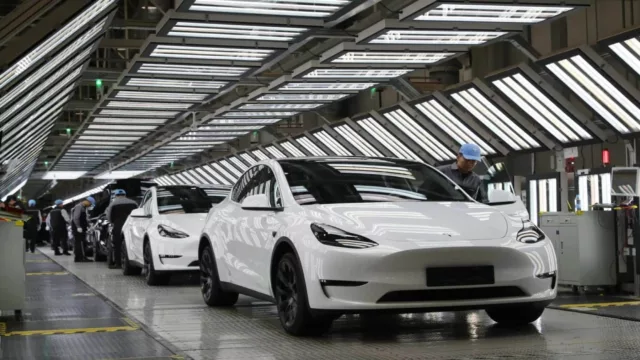
Tesla’s monopoly over China’s EV market is being challenged again and for the first time from the inside. New reports have shown a dramatic drop in Tesla sales, but the surprise is that it’s not the villain everyone thought it would be, BYD. But instead, something unusual is happening, and fans and analysts alike are wondering why. What’s going on with Tesla in China, and what lies ahead?
Tesla sales plummet: Why the numbers are falling and it’s not a price battle
Tesla retail sales declined 30% from last year in May 2025 as the company retailed just 38,588 units compared to over 55,000 that were retailed last month in May last year. It’s the fourth quarterly year-over-year decline in five months, and the company’s share of China’s new energy car market declined to 3.78% from 6.87% over the same period last year. Even with steep discounts and promotions, Tesla’s own expansion lags behind the rapidly growing Chinese EV market, which grew 28% over the same period.
Shocking as anything is the fact that BYD, Tesla’s largest arch-rival, can finger no one individual company as the cause of this failure. When the local Chinese players’ price war is as near death as a doorknob, it seems that the actual culprit is rather more the phenomenon of consumer preference shifts overall and further strain from newer Chinese BEV players such as Xiaomi and Chery. Newer models and more options are eroding Tesla’s early market dominance.
Such is the way new consumers and shifting tastes are transforming China’s EV industry
Chinese consumers are waiting in droves for bells-and-whistles, tech-laden ones at bargain prices. Disruptors like Xiaomi have launched frugal cars but chock-full of clever technology and achieved wonders with tech-hungry consumers. Tesla’s thin model lineup and too-much-reliance-on-Model-3-and-Model-Y are now starting to seem vieux jeu in a market that has learned to expect instant innovation.
The weird phenomenon: Why Tesla issues are not substitutable and BYD
The only plain bizarre thing here is that Tesla sales are slowing down while the rest of the market is picking up speed. Chinese sales of battery electric vehicles increased over 22% in May, but Tesla’s market share dropped from 11.15% to 6.36% year-over-year. That is, competition or pricing isn’t the problem—there must be something deeper in the market dynamic.
As Electrek puts it: “The automaker lagged its lead and wagered its whole future on autonomous.”
Thin product line and focus on autonomous technology have put the company at risk of failure, as Chinese auto makers are innovating and diversifying at lightning speed. Regardless of the latest record all-time discounts and 0% interest loans, Tesla sales are not picking up.
This is how Tesla’s plan will have to change in order to stay afloat in China
In an effort to get back on its feet, Tesla will have to change its game in China. Having more offerings available, investing further in local partnerships, and staying one step ahead of the ever-evolving local consumers’ cravings could be the answer. Shanghai factory is Tesla’s worldwide export center, but Chinese domestic sales at least lag behind the forecast. The second half of the year will thus come under even greater pressure as the price war expands.
Tesla’s China strategy is survival, not competition; Tesla’s newer Chinese adventures are a cosmic and hyperbolic reversal of the world’s largest electric vehicle market. Before company success is in full blossom and buys aren’t selling out the doors, new players aren’t taking their sweet time to become players, the company is at the make-or-break point. Tesla’s next step could be what makes it the king of China’s electric revolution or merely one of several contenders.
Disclaimer: Our coverage of events affecting companies is purely informative and descriptive. Under no circumstances does it seek to promote an opinion or create a trend, nor can it be taken as investment advice or a recommendation of any kind.









